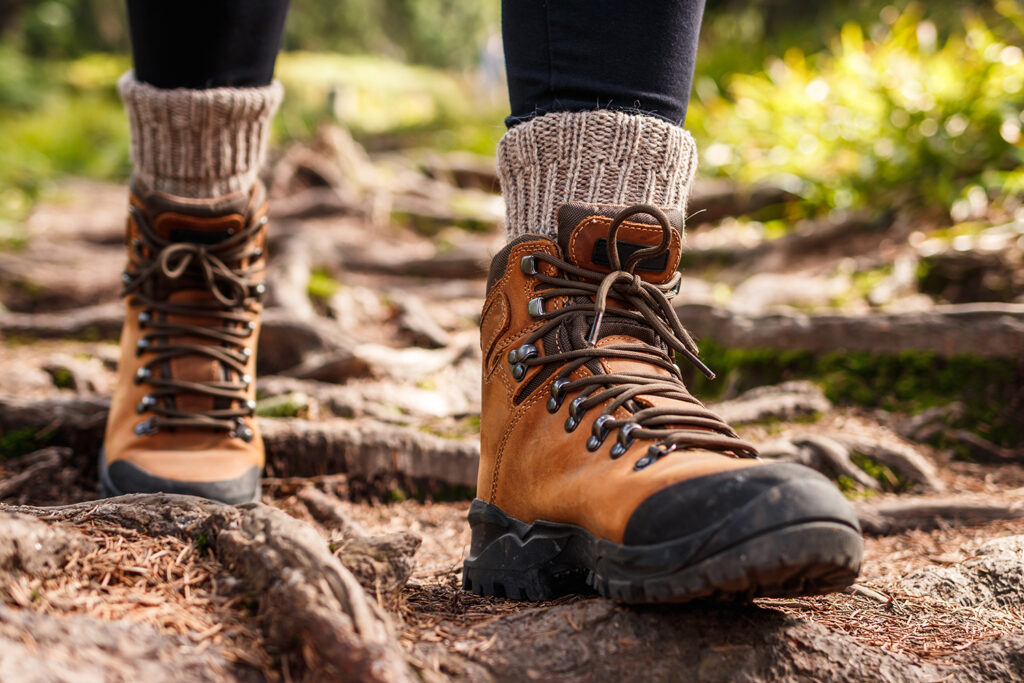Happy Feet: How to Prevent & Treat Hiking Blisters

Hiking is a fantastic way to explore nature, challenge yourself, and enjoy the great outdoors. However, nothing can ruin a great hike faster than painful blisters. These pesky skin irritations are a common problem for hikers, but with the right knowledge and preparation, you can keep your feet blister-free. In this article, we’ll dive into what causes blisters, how to prevent them, and the best ways to treat them with NuNature First Aid Gel, ensuring your hiking adventures remain comfortable and enjoyable.
What Causes a Blister?
Blisters are small pockets of fluid that form on the outer layers of your skin. They are typically caused by friction, which occurs when your skin rubs against something repeatedly. During a hike, your feet are especially prone to blisters due to the constant movement and pressure from walking long distances in your hiking boots. Other factors that can contribute to blister formation include:
- Moisture: Sweaty feet or wet socks can soften the skin, making it more susceptible to blisters.
- Heat: High temperatures can cause your feet to swell and sweat, increasing the risk of friction.
- Improper Footwear: Ill-fitting shoes or new boots that haven't been broken in can create pressure points that lead to blisters.
Foot Care for Hikers
Taking good care of your feet is essential to prevent blisters and ensure a comfortable hiking experience. Here are some tips to keep your feet happy on the trail:
- Choose the Right Footwear: Invest in high-quality hiking boots that fit well and provide adequate support. Make sure to break them in before embarking on a long hike.
- Wear Moisture-Wicking Socks: Opt for socks made of synthetic materials or wool, which help keep your feet dry by wicking away moisture.
- Keep Your Feet Dry: Change your socks regularly, especially if they become wet from sweat or water crossings.
- Use Insoles: Consider using cushioned insoles to reduce friction and provide additional support.
- Trim Your Toenails: Keep your toenails trimmed to prevent them from rubbing against the inside of your shoes.
How to Treat Blisters
If you develop a blister while hiking, it's essential to treat it promptly to prevent further discomfort and potential infection. NuNature First Aid Gel is an excellent choice for treating blisters due to its soothing and pain relieving properties.
Why NuNature First Aid Gel Works
NuNature First Aid Gel is an excellent tool for those who love the outdoors. Small and convenient, you can pack this treatment with you while you’re on-the-go for relief!
- Lidocaine for Pain Relief: The gel contains lidocaine, which provides fast, long-lasting pain relief by numbing the affected area.
- Antiseptic Formula: NuNature First Aid Gel kills germs and helps prevent infection, making it ideal for treating minor cuts, scrapes, and blisters.
- Non-Antibiotic: The gel is antibiotic-free, making it suitable for those allergic to topical antibiotics like neomycin and bacitracin.
- Precise Application: The needle nose tip allows for precise application, reducing mess and waste.
What Not to Do if You Get a Blister
When you have a blister, it's crucial to avoid specific actions that can worsen the condition or lead to infection:
- Don’t Pop the Blister: Popping a blister can increase the risk of infection. Let it heal naturally if possible.
- Avoid Tight Bandages: Don't apply bandages or tape too tightly, as this can restrict blood flow and exacerbate the blister.
- Don’t Ignore It: Ignoring a blister can lead to more severe problems, including larger blisters, infection, and increased pain.
How to Prevent Blisters on a Hike
Preventing blisters is key to enjoying your hike without discomfort. Here are some strategies to keep your feet blister-free:
- Proper Footwear Fit: Ensure your hiking boots fit well, with enough room for your toes to move but not so loose that your foot slides around.
- Layer Your Socks: Wearing a thin liner sock under your hiking socks can help reduce friction and wick away moisture.
- Use Blister Prevention Products: Apply blister prevention products like moleskin, blister pads, or specialized creams to areas prone to blisters before hiking.
- Take Breaks: Take regular breaks to rest your feet, change your socks, and inspect your feet for any signs of developing blisters.
- Keep Feet Dry: Use foot powder or antiperspirant on your feet to reduce sweating.
Preventing and treating hiking blisters requires the right preparation and care. You can ensure your hiking adventures are comfortable and blister-free by choosing the right footwear, keeping your feet dry, and using effective treatments like NuNature First Aid Gel. Remember, a little prevention goes a long way in keeping your feet happy on the trail.




